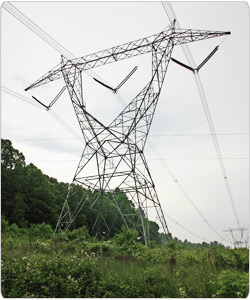Theoretically there is enough electricity released in one lighting strike to power about 150,000,000 light bulbs. To put that in perspective there are about 15-30 light bulbs in an average US home. That means a single lighting strike could give light to about 10,000,000 American homes. Wow, wouldn’t that be great. However, the physics involved with successfully harnessing and storing lighting make it about as possible as time travel. As Ben stiller says in something about Mary, “So you’re saying there’s a chance!” Sorry, Ben, there is no chance. However, even without lighting we still get electricity, and we are able to light our houses, power our electronics, and even shave our moustaches. Amazing I know. Energy has never been more readily available than it is now, but at what cost. Our archaic energy grid has strained both our lights and our wallets for too long. But before I get to the grid let me quickly explain how we get our energy here in the US.
Energy, in the US, is a complex interconnected grid of power stations, transmission circuits, and substations. I could attempt to describe it accurately, but I could never do its complexity justice, so I will attempt to simplify and describe it linearly.
 |
| High Voltage Transmission Line |
A power station, or power plant, generates a constant stream of electricity, usually at a rate of 20 Kilovolts (kv). This electricity is than lead away from the plant to a nearby transmission substation, or transformer. Here the voltage is stepped up to about 138kv. I couldn’t even begin to describe/understand the processes used to do this but if you are desperate, ask your neighborhood electrical engineer. I’m sure he could talk to you for years about it. Anyway. The reason the voltage is stepped up is because the higher the voltage, the faster and more efficiently electricity can be transmitted over long distances. So from this first station, the electricity is transmitted through long-range transmission lines, you may recognize them as this:
Once these lines begin to near their final destination, say your toaster, they are met by second substation. Here their voltage is reduced to 69kv. The reason, many industrial and commercial customers, located outside of residential areas, need higher voltages to power their centers. So the lower voltage carries on along before being stepped down again to 13.8kv. This electricity then travels into cities along power lines that are suspended by wooden poles. Everyone has seen these. However, the voltage is still much to high to power your toaster, so they are stepped down again to 120/240v. The step down occurs in something, I am sure you have seen but never known the function, it looks like this:
Finally, the energy generated hundreds or even thousands of miles away is ready to burn the hell out of your toast.
Phew. To think that this description is a joke compared to what actually goes on, but you get the gist. Its complicated.
Sincerely,
That Guy


No comments:
Post a Comment